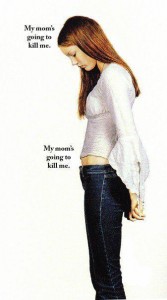The case for Biblical Trinitarianism.
Dr. James White teaches on the doctrine of the Trinity at a time when much of the Church seems unaware of its vital importance.
HT: LaneCh

 Charles Pope, D.C., is compiling a list of quotations from the early church on abortion, which is not a modern invention but was extremely common during the Roman Empire.
Charles Pope, D.C., is compiling a list of quotations from the early church on abortion, which is not a modern invention but was extremely common during the Roman Empire.
He writes:
A couple of years ago a former Speaker of the House, whose name need not be mentioned here at all, showed herself an amateur theologian lacking in even basic knowledge by claiming (on what she called Jesuitical authority) that the Church teaching on abortion was no older than the 1950s. The usually cautious American Bishops lost no time in issuing vigorous correction. And rightly so, of course, as quotes like these will show.
The Didache (“The Teaching of the Twelve Apostles”) ca 110 AD. Thou shalt not murder a child by abortion. (2:2)…The Way of Death is filled with people who are…murderers of children and abortionists of God’s creatures. (5:1-2)
Letter of Barnabas, circa 125: You shall not kill either the fetus by abortion or the new born
Athenagoras the Athenian (To Marcus Aurelius), ca 150 AD: “We say that those women who use drugs to bring on abortion commit murder, and will have to give an account to God for the abortion…, [For we] regard the very fœtus in the womb as a created being, and therefore an object of God’s care… (# 35).
Clement of Alexandria: (circa 150 – 215 AD) Our whole life can go on in observation of the laws of nature, if we gain dominion over our desires from the beginning and if we do not kill, by various means of a perverse art, the human offspring, born according to the designs of divine providence; for these women who, if order to hide their immorality, use abortive drugs which expel the child completely dead, abort at the same time their own human feelings. Paedagogus, 2
Tertullian circa 160-240 AD: For us, we may not destroy even the fetus in the womb, while as yet the human being derives blood from other parts of the body for its sustenance. To hinder a birth is merely a speedier man-killing; nor does it matter when you take away a life that is born, or destroy one that is coming to birth. That is a man which is going to be one: you have the fruit already in the seed. Apology 9:6
Tertullian (circa 160 – 240 AD): …we are not permitted, since murder has been prohibited to us once and for all, even to destroy …the fetus in the womb. It makes no difference whether one destroys a life that has already been born or one that is in the process of birth. Apology (9:7-8)
Tertullian circa 160-240 AD: [John the Baptist and Jesus] were both alive while still in the womb. Elizabeth rejoiced as the infant leaped in her womb; Mary glorifies the Lord because Christ within inspired her. Each mother recognizes her child and is known by her child who is alive, being not merely souls but also spirits. De Aninta 26:4
Hippolytus (circa 170-236 AD): Whence certain women, reputed believers, began to resort to drugs for producing sterility and to gird themselves round, so as to expel what was conceived on account of their not wanting to have a child either by a slave or by any paltry fellow, for the sake of their family and excessive wealth. Behold, into how great impiety that lawless one has proceeded, by inculcating adultery and murder at the same time. From “Refutation of all Heresies” 9:7
Continue reading
In an article entitled “FactChecker: The Cross an Electric Chair?” found Glen T. Stanton writes:
Have you ever heard a Christian writer, teacher, or pastor say something like the following?
“When Jesus told those who would follow him that they must ‘take up his cross daily’ this was like telling people today to take up their electric chairs and follow him.”
or
“For Christians to wear crosses around their necks is like us wearing a symbol of an electric chair.”
 The analogy between the cross and an electric chair is intended to show that, while the cross has become a common and even sentimental symbol of Christianity today, in Christ’s day it was a harsh symbol of execution. Like an electric chair is today.
The analogy between the cross and an electric chair is intended to show that, while the cross has become a common and even sentimental symbol of Christianity today, in Christ’s day it was a harsh symbol of execution. Like an electric chair is today.
It is an important truth that Christians of every age remember about the cross. But the electric chair analogy actually deludes the point.
This comparison between the cross and old sparky was first made by an important theologian of the 1960s: Lenny Bruce. In a series of articles he serialized in Playboy, later published in his 1967 posthumous book, How to Talk Dirty and Influence People, Bruce observed,
If Jesus had been killed twenty years ago, Catholic school children would be wearing little electric chairs around their necks instead of crosses.
Cue the laughter. But the truth is, an electric chair and a cross are similar in only one way: each is designed to kill criminals. Otherwise, they are nothing alike.
The electric chair was created by the Edison Company in the late 1800s as a means to execute a prisoner faster and more humanely. Typically, the process—leading up to, during, and following our executions today—is carefully scripted and implemented to ensure the criminal dies with some dignity and as little suffering as possible.
Continue reading